In the fast-evolving landscape of PC hardware, Intel’s Raptor Lake Refresh lineup is currently the reigning series in the CPU market, offering numerous Core processor models, which got slightly upgraded over the 13th-generation Raptor Lake chips. Even though the CPUs didn’t get a new die design from scratch, higher clock speeds at the same price tag make them a better alternative if you are going to build a PC from scratch.
Mid-range CPUs, particularly those on the lower side of the spectrum tend to sell like hotcakes due to their excellent price-to-performance ratio. Here we are specifically talking about the Intel Core i5 14400F CPU, which offers a good 10 core/16 thread configuration with 100-200MHz higher boost clock speeds over its predecessor. The CPU, however, isn’t sufficient alone to boost your gaming performance and you will require a potent GPU to maximize the gaming performance as well as performance in graphical-intensive workloads such as graphic designing, game development, video, and photo editing.
If you are in search of such a powerful GPU, here is the list of the top five best graphics cards to use with the Core i5 14400F.
TFG’s Picks for the Best GPUs for Core i5 14400F
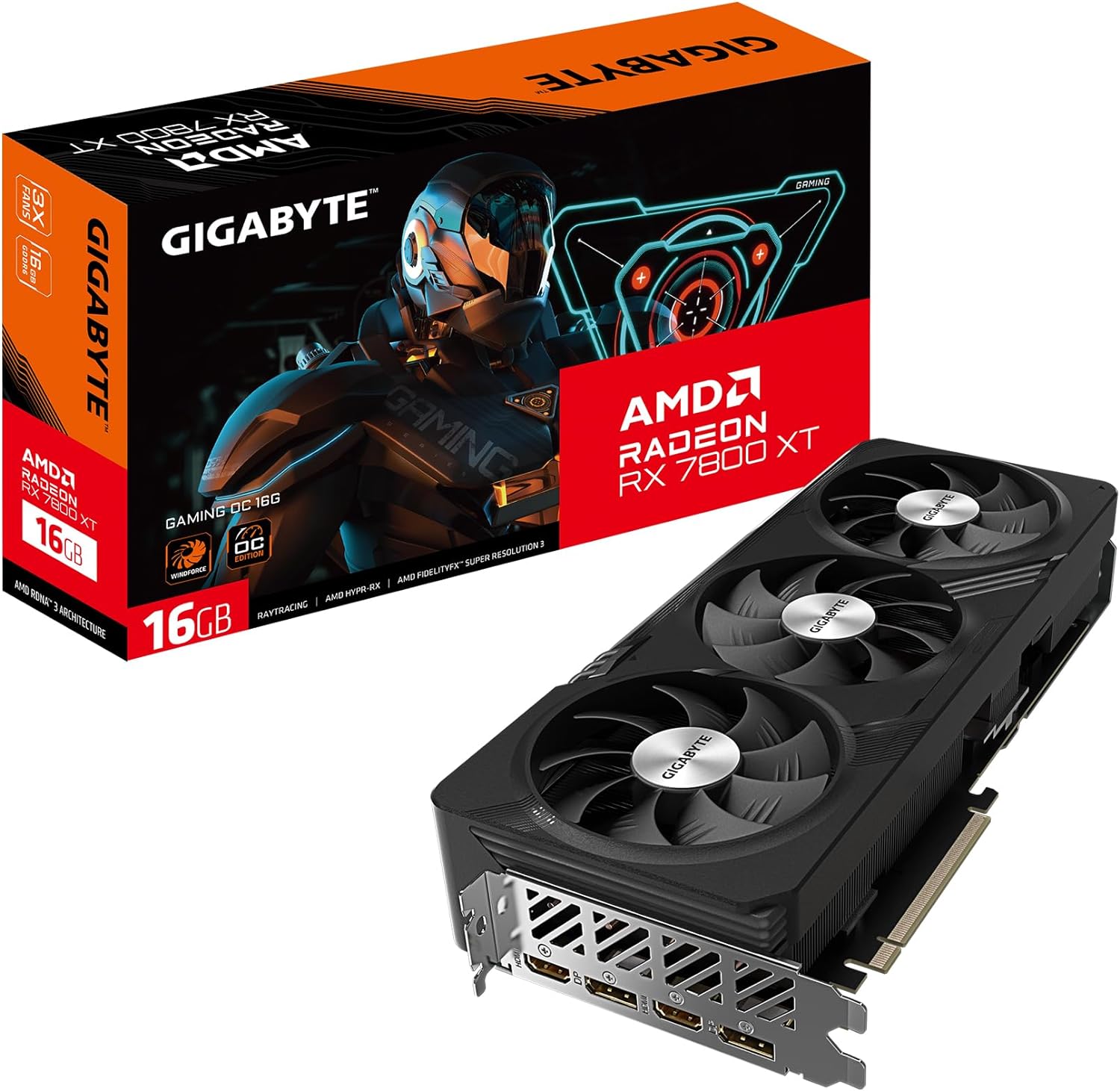
A solid mid-range card for maximizing the graphics presets without dropping the frame rates below 60. The Gigabyte RX 7800 XT Gaming OC edition comes with a triple-fan cooling solution and is fairly powerful for any triple-A title.
Initially launched for $499, the RX 7800 XT can now be found for a few bucks cheaper. The GPU is currently the fastest mid-range card AMD has ever produced under $500 and goes head to head with Nvidia counterparts such as RTX 4070. Although the ray tracing performance is a bit dull compared to the Nvidia GPUs, the raster performance is on par. Based on the RDNA 3 architecture and made on TSMC’s 5nm process node, the RX 7800 XT achieves excellent performance in modern gaming titles, offering a big VRAM capacity for future-proofing your build.
Radeon RX 7800 XT, unlike the 4070, has 16GB VRAM for bumping up the textures and other graphics presets to max. Through its pairing with the Core i5 14400F, it will be able to reach its full potential, delivering excellent gaming performance at 1440p resolution. Expect most games to reach 100+ fps even on ultra settings. It’s surely power-hungrier than the Nvidia alternatives, but it’s also cheaper and boasts a better memory configuration.
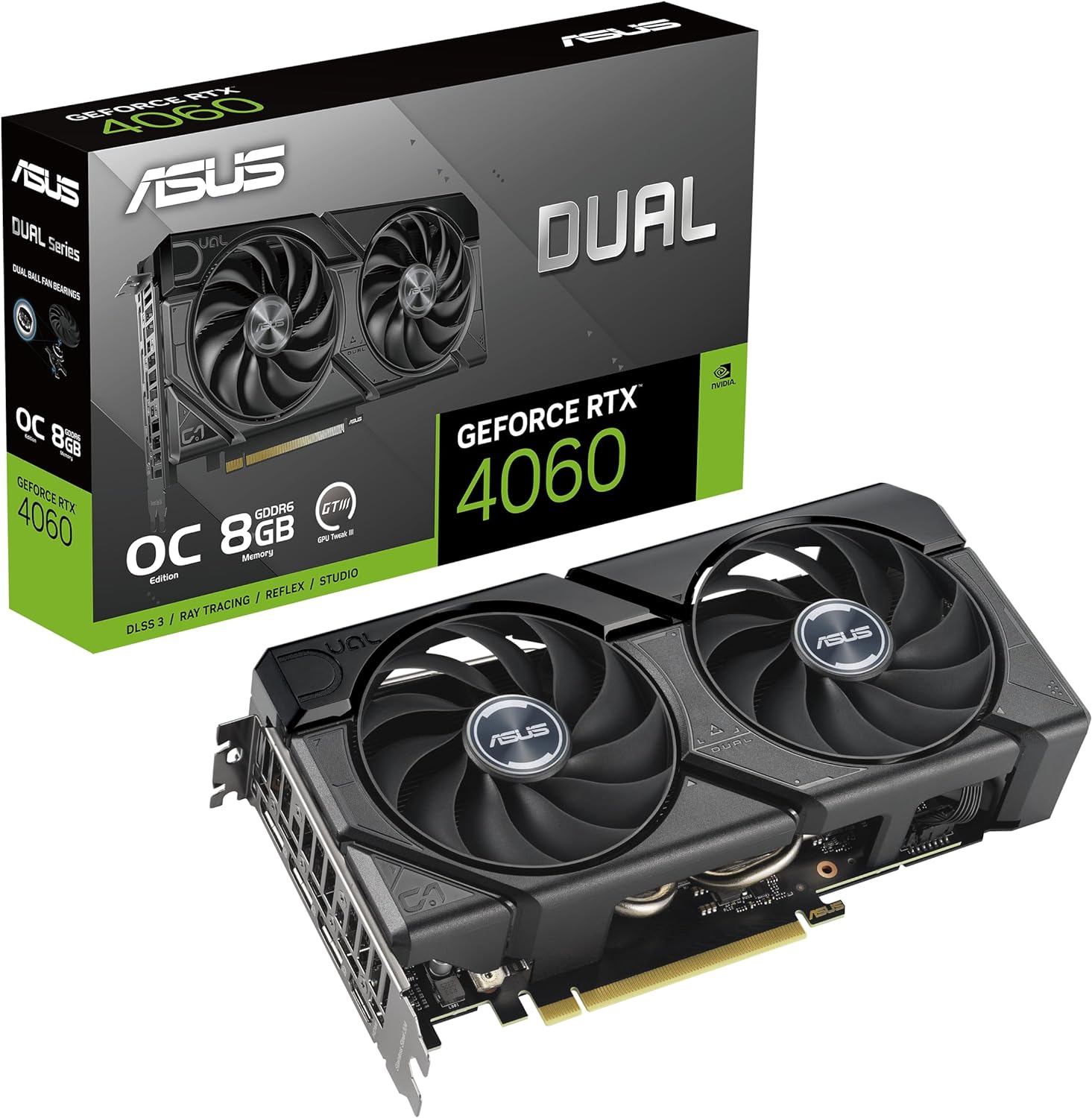
An affordable yet capable GPU for gamers who want to play on the ultra graphics presets at 1080p. With its power-efficient operation and support for DLSS 3.0, it doesn’t struggle to reach 60 fps in modern titles. The Asus Dual is a compact and factory-overclocked edition, easily compatible with most cases, and offers better performance out of the box.
RTX 4060’s launch wasn’t too exciting since the VRAM configuration was inferior to the RTX 3060 12GB edition. Even though some of its specifications have been nerfed over the predecessor, it’s able to outperform the latter convincingly in both rasterization and ray tracing. The RTX 4060 is currently one of the most popular budget GPUs and is also one of the best-selling ones on Amazon and other retail stores.
Its power-efficient operation is one of the most notable features that allow it to deliver more fps per watt than any other budget GPU, including the latest RX 7600 and RX 7600 XT from AMD. At just 115W, it’s somewhat equivalent to a low-profile GPU in power consumption but at the same time, is as powerful as previous-gen mid-range GPUs. The RTX 4060 may not be ideal for ray tracing without DLSS but it surely is superior to most budget GPUs and will be a wonderful choice for building a budget or mid-range gaming system for under $1000.
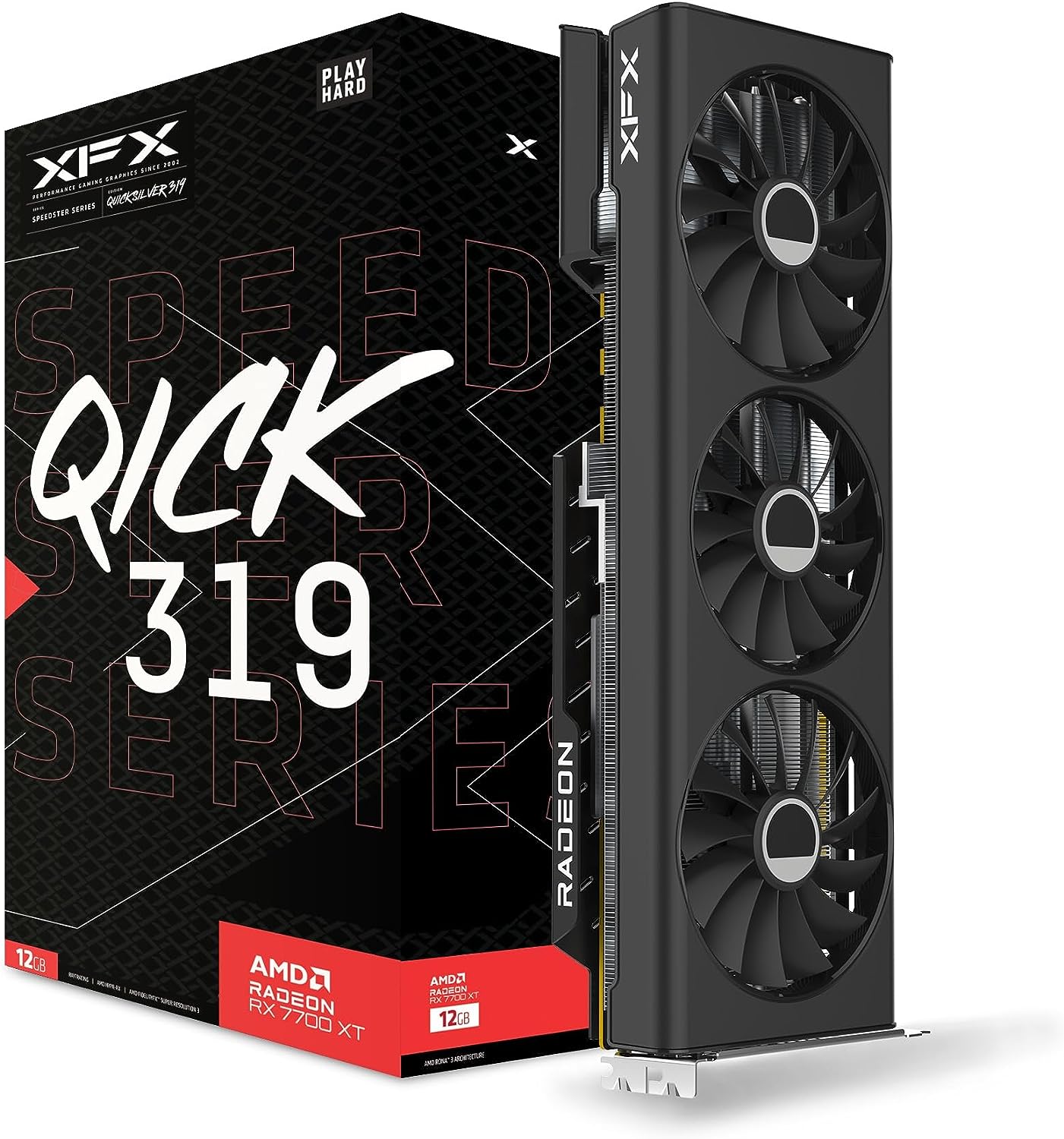
The RX 7700 XT offers a great balance between price and performance. Offering excellent 1080p performance and satisfactory 1440p gaming capabilities, the RX 7700 XT has all the bells and whistles for a mid-range gaming build.
If you want a moderate solution, there is nothing that beats the Radeon RX 7700 XT for a price of $400. Initially launched for $450, the GPU was criticized for being too behind the RX 7800 XT in terms of price-to-performance ratio. With a $50 price cut, the RX 7700 XT now makes sense, especially when its closest competitor, the RTX 4060 Ti 8GB is also at the same price.
The RX 7700 XT beats the 4060 Ti 8GB and even the 16GB edition fair and square in almost every game at both 1080p and 1440p resolutions. Turn on ray tracing, the RX 7700 XT is now trailing with a noticeably low framerate. Still, the 7700 XT makes more sense at $400 due to 12GB VRAM and a good 192-bit bus. With the Core i5 14400F, you can build a decent $1000-$1200 gaming system with the RX 7700 XT that can maintain a 60+ fps mark without breaking a sweat.
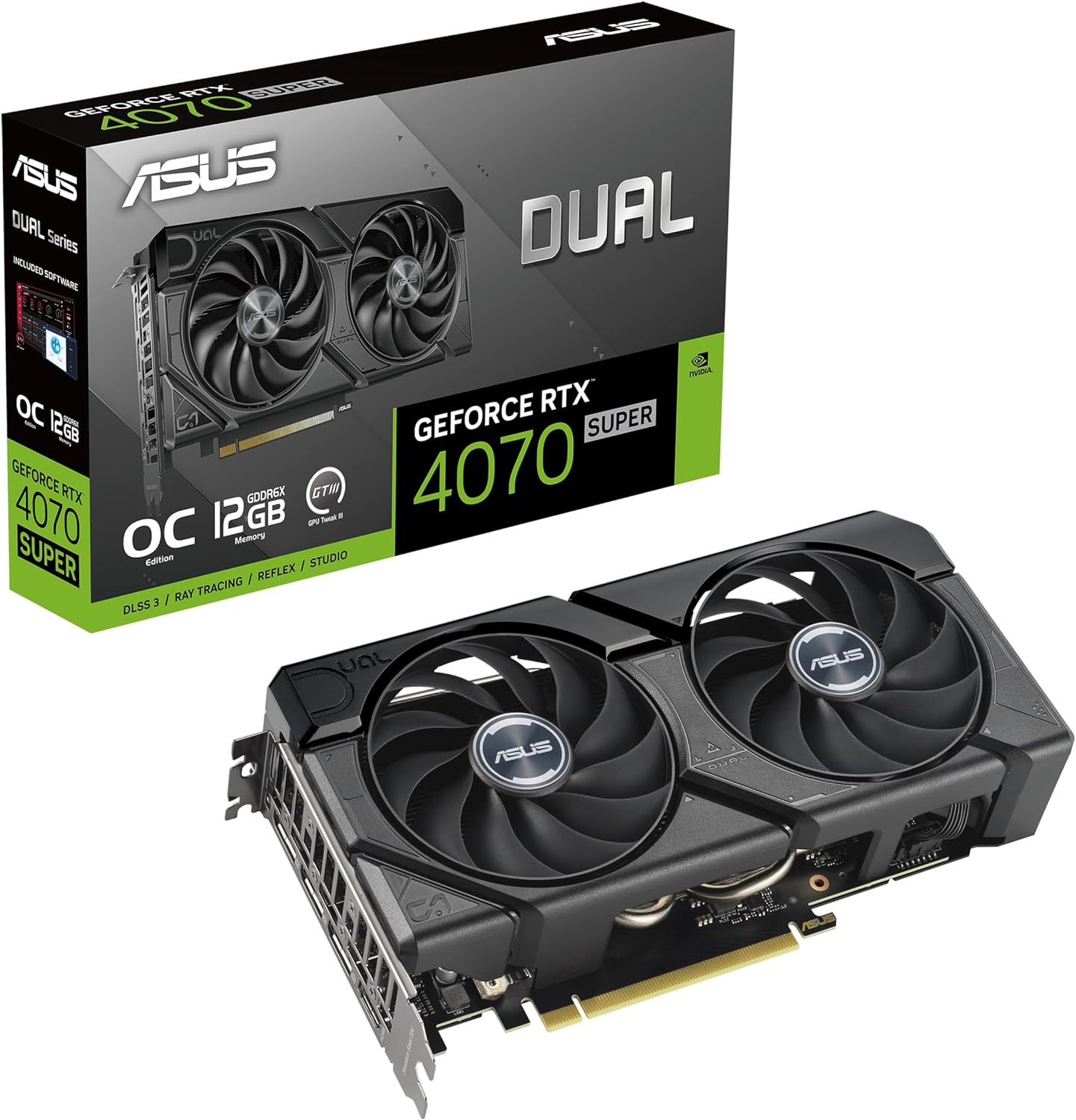
The RTX 4070 is an upgraded upper-mid range RTX 4070 card that boasts 22% more Cuda Cores for achieving higher raster and ray tracing performance. For $50 more, the 4070 Super destroys most GPUs within the sub-$600 price range and is suitable for playing with ray tracing turned on.
On the higher-end side, the RTX 4070 Super is our best possible recommendation for pairing with the Core i5 14400F. It’s definitely expensive at $600 but worth every dollar once you understand how powerful it is in modern titles. From maxing out visuals in the latest and intensive titles like Hogwarts Legacy, Starfield, and Cyberpunk 2077 to offering framerates in triple digits with DLSS 3.0, the RTX 4070 Super shows its extraordinary strength for enthusiast gamers.
Despite retaining the same VRAM configuration as the RTX 4070, the 12GB GDDR6X VRAM on a 192-bit bus, the memory bandwidth is quite enough for 1440p resolution and even for 4K. The Cuda Cores are now 7168 compared to 5888 on the RTX 4070, which is one of the reasons for its 20% performance uplift over the latter. With just 25W of power consumption increment and a $50 higher price, the RTX 4070 Super is a no-brainer.
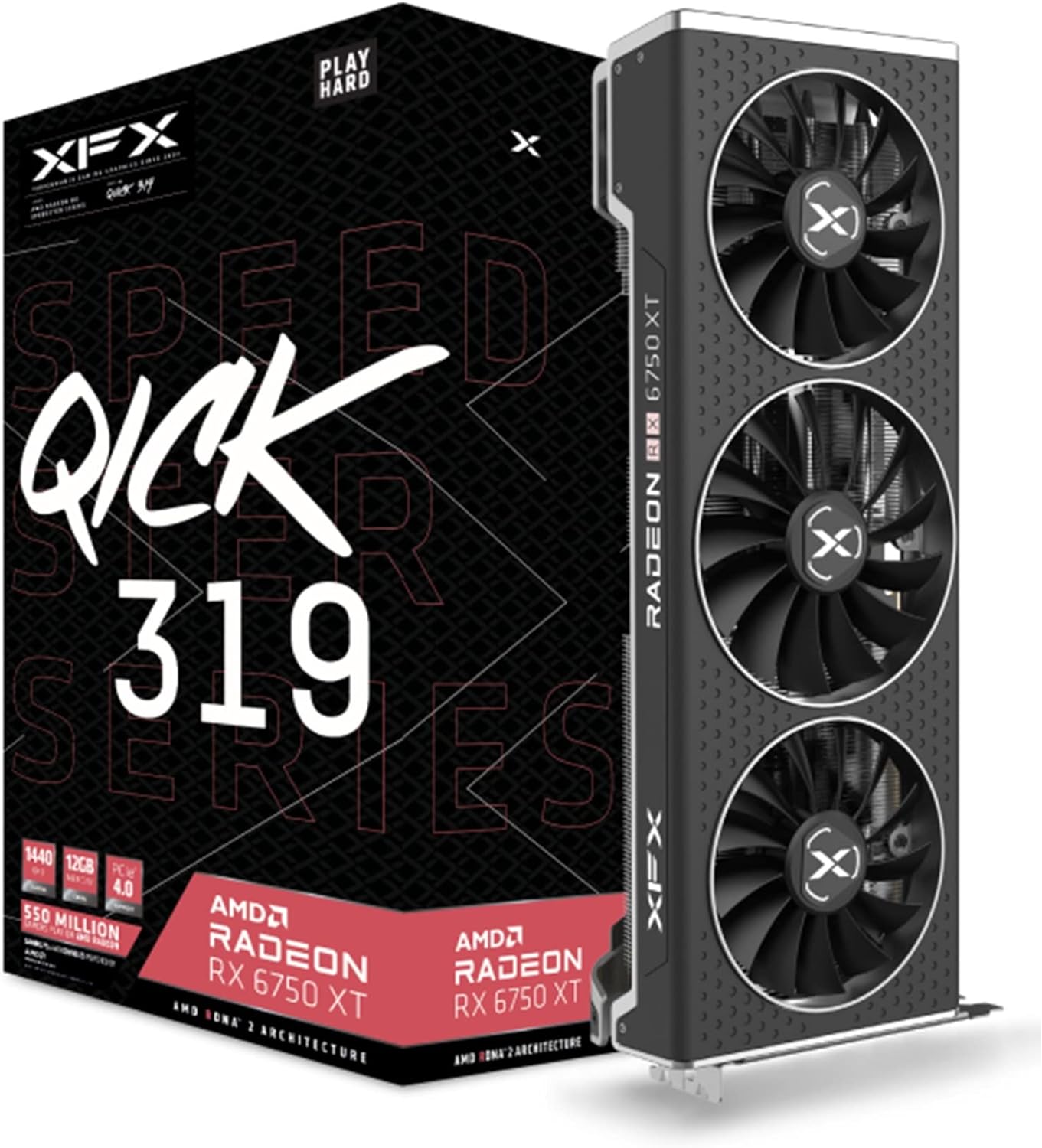
The RX 6750 XT retains its unparalleled value for money and is still abundantly available in most retail stores with significant discounts. Offering great 1440p performance and 12GB VRAM, it is perfect for pure raster performance on ultra settings. The XFX edition gives you a triple-fan cooling solution for maintaining higher clock speeds.
Released almost two years ago, the RX 6750 XT is still one of the most appealing GPUs you can have in your system. Made on TSMC’s 7nm process node and RDNA 3 architecture, the RX 6750 XT was one of the best-performing mid-range GPUs at the launch time and is still showing its dominance in the budget segment. Typically, most users would go with the latest-gen GPUs such as the RTX 4060 or RX 7600 XT for $300, but the RX 6750 XT is offering way better raster performance for the same price.
Even though the lack of AV1 encoding support may send away some users, particularly those who are in the streaming scene, the RX 6750 XT is unmatched in price-to-performance ratio compared to the modern budget GPUs, offering almost 16% higher performance than the 4060 and 14% higher performance than the RX 7600 XT. Ray Tracing performance is still disappointing but considering most users play without it, the 6750 XT seems to be a compelling option to pair with the Core i5 14400F.
What to Look for When Buying a GPU for Intel Core i5 14400F?
GPU Generation: GPU generation is as important as the CPU generation. Going with the latest-gen GPU typically not only provides the best possible performance per watt or dollar, it also offers better compatibility with the latest-gen titles. With the release of FSR 3 and DLSS 3, the upscaling techniques are now limited to modern GPUs, restricting your GPU’s performance in supported titles with the older-gen cards. Encoding mode such as AV1 encoding is another factor that can be a dealbreaker for many. In simple words, it’s best to opt for a newer-gen GPU unless you can find a previous-gen GPU for a much lower price.
VRAM: Modern titles consume more VRAM and it has been proven multiple times, illustrating the need for more memory to render big and complex geometry. 8GB is the bare minimum when gaming at 1080p resolution but as you go higher, the need for higher VRAM also increases. While it’s not true for every game, it’s definitely a wiser decision to go for a higher VRAM GPU to future-proof your build. The Core i5 14400F is not going to be a bottleneck at 1440p or even at 4K but it’s most likely going to be your GPU, which is why it matters the most.
Bottlenecking: Speaking about bottlenecking, ensure that your GPU can hit 100% before your CPU. Thankfully, the Core i5 14400F isn’t like a 6th or 7th gen Core i5 CPU with just four core configurations and won’t hit 100% even if you use a high-end GPU like an RTX 4080 Super. Bottlenecking won’t be an issue here, but your CPU may not reach its full potential if you choose a GPU that is too weak to execute a lot of operations quickly.
Target Resolution: Our list mostly contains GPUs that target either 1080p or 1440p resolution. It’s on you to decide which resolution you are going to game on. 1080p is the most common resolution but 1440p is getting also gaining more popularity than ever. Nonetheless, no matter what resolution you choose, the Core i5 14400F will be sufficient for any game.
Power Requirements: Once you are done comparing the specs and performance of GPUs, look for the TGP of each GPU. As may have seen from the specs sheet of the GPUs listed above, the Nvidia GPUs tend to be significantly more power-efficient than the Radeon cards. The difference is quite big and can be a major deciding factor where you live. Going with a Radeon GPU with high TGP in Europe can increase your electricity bill drastically but in many parts of the world, it won’t be a big deal for many users, particularly if they are more performance-focused.
FAQ
Is the Intel Core i5 14400F good for gaming?
The Core i5 14400F is an excellent mid-range CPU for building a mid-range or even a high-end gaming build. With a 10-core, 14-thread configuration, the CPU has enough juice to not only push a GPU to its limits but crunch big numbers quickly.
Does the Core i5 14400F support DDR5?
The Core i5 14400F is compatible with the LGA 1700 socket. Motherboards with LGA 1700 sockets come in either DDR4 or DDR5 slots, which means the Core i5 14400F supports both DDR4 and DDR5 memories.
Is the Core i5 14400F good for streaming?
Absolutely! As streaming requires a good core count, the i5 14400F will be ideal for most streamers.
